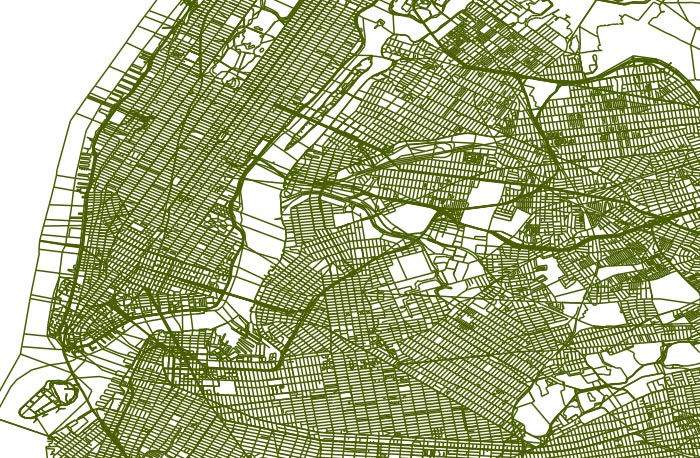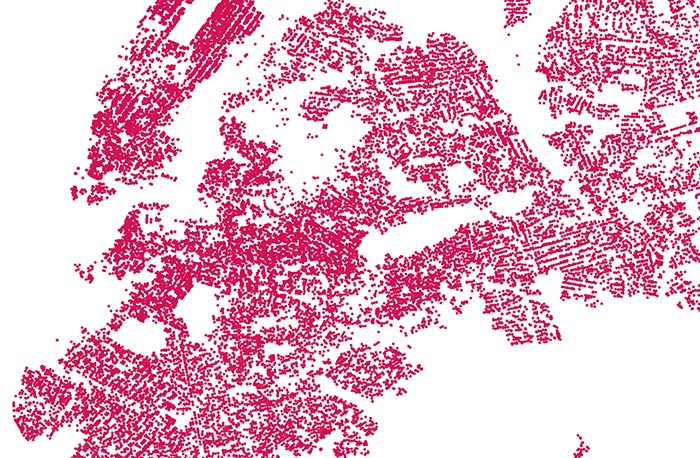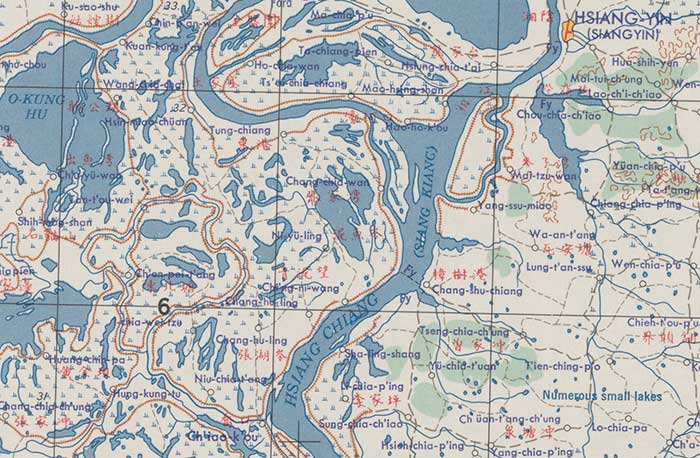View Metadata
World Wildlife Fund Marine Ecoregions, 2008
- Identification Information
- Data Quality Information
- Spatial Data Organization Information
- Spatial Reference Information
- Entity and Attribute Information
- Distribution Information
- Metadata Reference Information
- Identification Information
- Citation
- Originator
- World Wildlife Fund
- Originator
- ESRI
- Publication Date
- 2008
- Title
- World Wildlife Fund Marine Ecoregions, 2008
- Edition
- 2008
- Geospatial Data Presentation Form
- vector digital data
- Series Information
- Series Name
- ESRI Data Maps
- Issue Identification
- 2008 World, Europe, United States, Canada, and Mexico
- Publication Information
- Publication Place
- Redlands, California, USA
- Publisher
- ESRI
- Online Linkage
- https://www1.columbia.edu/sec/acis/eds/dgate/studies/C1301/data/esri_2008_world_wwf_mar.zip
- Abstract
- World Wildlife Fund Marine Ecoregions is a polygon theme representing global marine ecoregions. Ecoregions are defined as relatively large areas of land or water in the world containing a characteristic set of natural communities that share a large majority of their species, dynamics, and environmental conditions. This data set contains the marine ecoregions of the Global 200. Global 200 ecoregions are a collection of the Earth's most outstanding and diverse terrestrial, freshwater, and marine habitats where the Earth's biological wealth is most distinctive and rich, where its loss will be most severely felt, and we must protect if we are to preserve the web of life. For more information, contact http://www.worldwildlife.org. This dataset is a part of the 2008 ESRI Data and Maps Collection.
- Purpose
- World Wildlife Fund Marine Ecoregions provides a global view of marine ecoregions defined by the World Wildlife Fund Conservation Science Program 2001, and can be used for geographic display.
- Supplemental Information
- Largest scale when displaying the data: 1:50,000,000.
- Temporal Extent
- Currentness Reference
- publication date
- Time Instant
- 2001
- Bounding Box
- West
- -179.999955
- East
- 179.999964
- North
- 82.806018
- South
- -85
- Theme Keyword
- polygon
- ecoregions
- ecosystems
- species richness
- species endemism
- ecological
- evolutionary
- habitat
- global rarity
- biodiversity
- global 200
- Theme Keyword Thesaurus
- None
- Theme Keyword
- biota
- oceans
- Theme Keyword Thesaurus
- ISO 19115 Topic Categories
- Place Keyword
- World
- Earth
- Place Keyword Thesaurus
- Library of Congress Subject Headings
- Temporal Keyword
- 2001
- Temporal Keyword Thesaurus
- None
- Access Restrictions
- For current Columbia affiliates only.
- Use Restrictions
- For educational, non-commercial use only.
- Status
- Complete
- Maintenance and Update Frequency
- Annually
- Point of Contact
- Contact Organization
- ESRI
- Delivery Point
- 380 New York Street
- City
- Redlands
- State
- California
- Postal Code
- 92373-8100
- Country
- USA
- Contact Telephone
- 909-793-2853
- Contact Facsimile Telephone
- 909-793-5953
- Contact Electronic Mail Address
- info@esri.com
- Hours of Service
- 7:00 a.m.-5:30 p.m. Pacific time, Monday-Friday
- Native Data Set Environment
- Microsoft Windows 2000 Version 5.0 (Build 2195) Service Pack 3; ESRI ArcCatalog 8.3.0.800
- Data Quality Information
- Logical Consistency Report
- The shapefile is converted to SDC (Smart Data Compression) format using either ESRI SDC Data Development Kit Professional 2 (DDKP2) or tools in ArcGIS. The SDC data set is then loaded into ArcSDE to verify and validate the geometry.
- Completeness Report
- After processing, the data set is checked for drawing display and number of records and file sizes compared with source materials.
- Horizontal Positional Accuracy Report
- The positional accuracy is not known.
- Lineage
- Source
- Originator
- World Wildlife Fund
- Publication Date
- 2001
- Title
- World Wildlife Fund Conservation Science Program 2001
- Edition
- 2001
- Geospatial Data Presentation Form
- vector digital data
- Publication Information
- Publication Place
- Washington, DC, USA
- Publisher
- World Wildlife Fund
- Other Citation Details
- Cited in reference sections, on maps, or on databases with the full citation: Olson, D.M., E. Dinerstein, E.D. Wikramanayake, N.D. Burgess, G.V.N. Powell, E.C. Underwood, J.A. D'Amico, H.E. Strand, J.C. Morrison, C.J. Loucks, T.F. Allnutt, J.F. Lamoreux, T.H. Ricketts, I. Itoua, W.W. Wettengel, Y. Kura, P. Hedao, and K. Kassem. 2001. Terrestrial ecoregions of the world: A new map of life on Earth. BioScience 51(11):933-938. Sherman, K. and T. Laughlin. 1992. The large marine ecosystem (LME) concept and its application to regional marine resources management. Marine Conservation Development Reports, Gland, Switzerland.
- Type of Source Media
- online
- Source Temporal Extent
- Time Period Information
- Single Date/Time
- Calendar Date
- 2001
- Source Currentness Reference
- publication date
- Contribution
- Attribute and geospatial data
- Spatial Data Organization Information
- Direct Spatial Reference Method
- Vector
- Point and Vector Object Information
- SDTS Terms Description
- SDTS Point and Vector Object Type
- G-polygon
- Point and Vector Object Count
- 43
- Spatial Reference Information
- Horizontal Coordinate System Definition
- Geographic
- Latitude Resolution
- 0.000009
- Longitude Resolution
- 0.000009
- Geographic Coordinate Units
- Decimal degrees
- Geodetic Model
- Horizontal Datum Name
- D_WGS_1984
- Ellipsoid Name
- WGS_1984
- Semi-major Axis
- 6378137.000000
- Denominator of Flattening Ratio
- 298.257224
- Entity and Attribute Information
- Entity Type
- Entity Type Label
- wwf_mar
- Entity Type Definition
- The polygons represent global marine ecoregions defined as relatively large areas of water in the world that share a large majority of their species, dynamics, and environmental conditions.
- Entity Type Definition Source
- World Wildlife Fund
- Attributes
- ObjectID
- Internal feature number. (Sequential unique whole numbers that are automatically generated.)
- Definition Source
- ESRI
- Shape
- Feature geometry. (Coordinates defining the features.)
- Definition Source
- ESRI
- G200_REGIO
- The name of the Global 200 ecoregion that this ecoregion is a part of. If there is no name the ecoregion is not a Global 200 ecoregion.
- (blank)
- Not a Global 200 Region.
- Name
- Names for the features.
- Definition Source
- World Wildlife Fund
- G200_BIOME
- The biome of the Global 200 region that the ecoregion is a component of. Occasionally a Global 200 region is made up of ecoregions of different biomes. In this case, for a particular ecoregion, the G200_BIOME may be different from the original biome.
- 0
- Not a Global 200 Biome.
- 22
- Polar.
- 23
- Temperate Shelf and Seas.
- 24
- Temperate Upwelling.
- 25
- Tropical Upwelling.
- 26
- Tropical Coral.
- Definition Source
- World Wildlife Fund
- G200_NUM
- The unique number identifying Global 200 ecoregions.
- 0
- Not a Global 200 Number.
- Number
- Unique numbers for the features.
- Definition Source
- World Wildlife Fund
- Distribution Information
- Format Name
- SDC
- Distributor
- ESRI; ESRI International Distributors
- Name
- Metadata Reference Information
- Metadata Date
- 20090716
- Metadata Contact
- Contact Information
- Contact Organization Primary
- Contact Organization
- Research Data Services (RDS), Columbia University Libraries
- Contact Person
- GIS/Metadata Librarian
- Contact Address
- Address
- 420 W. 118th St. 215 IAB, MC 3301
- City
- New York
- State or Province
- NY
- Postal Code
- 10027
- Country
- USA
- Contact Voice Telephone
- (212) 854-6012
- Contact Electronic Mail Address
- data@library.columbia.edu
- Metadata Standard Name
- FGDC Content Standards for Digital Geospatial Metadata
- Metadata Standard Version
- FGDC-STD-001-1998


